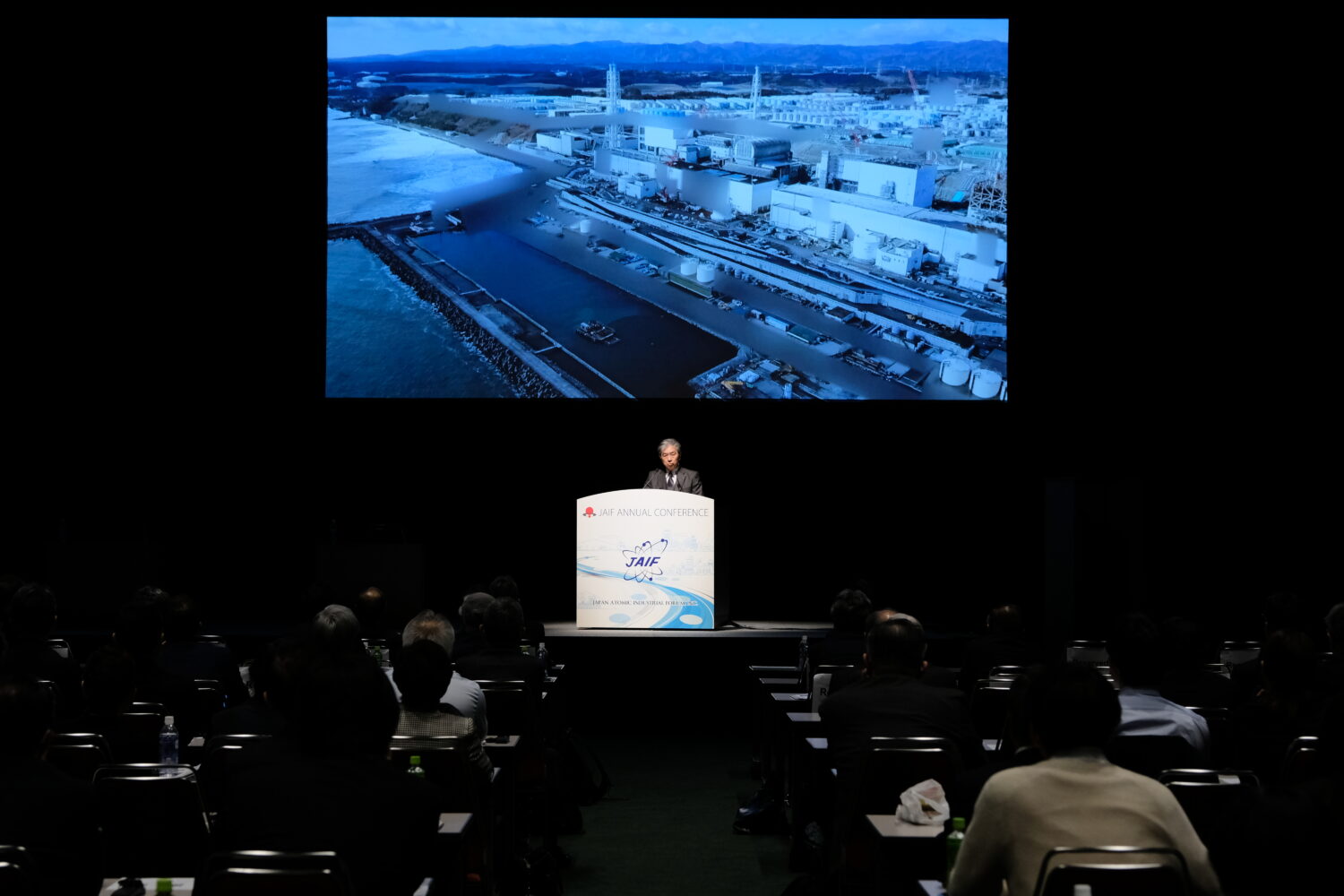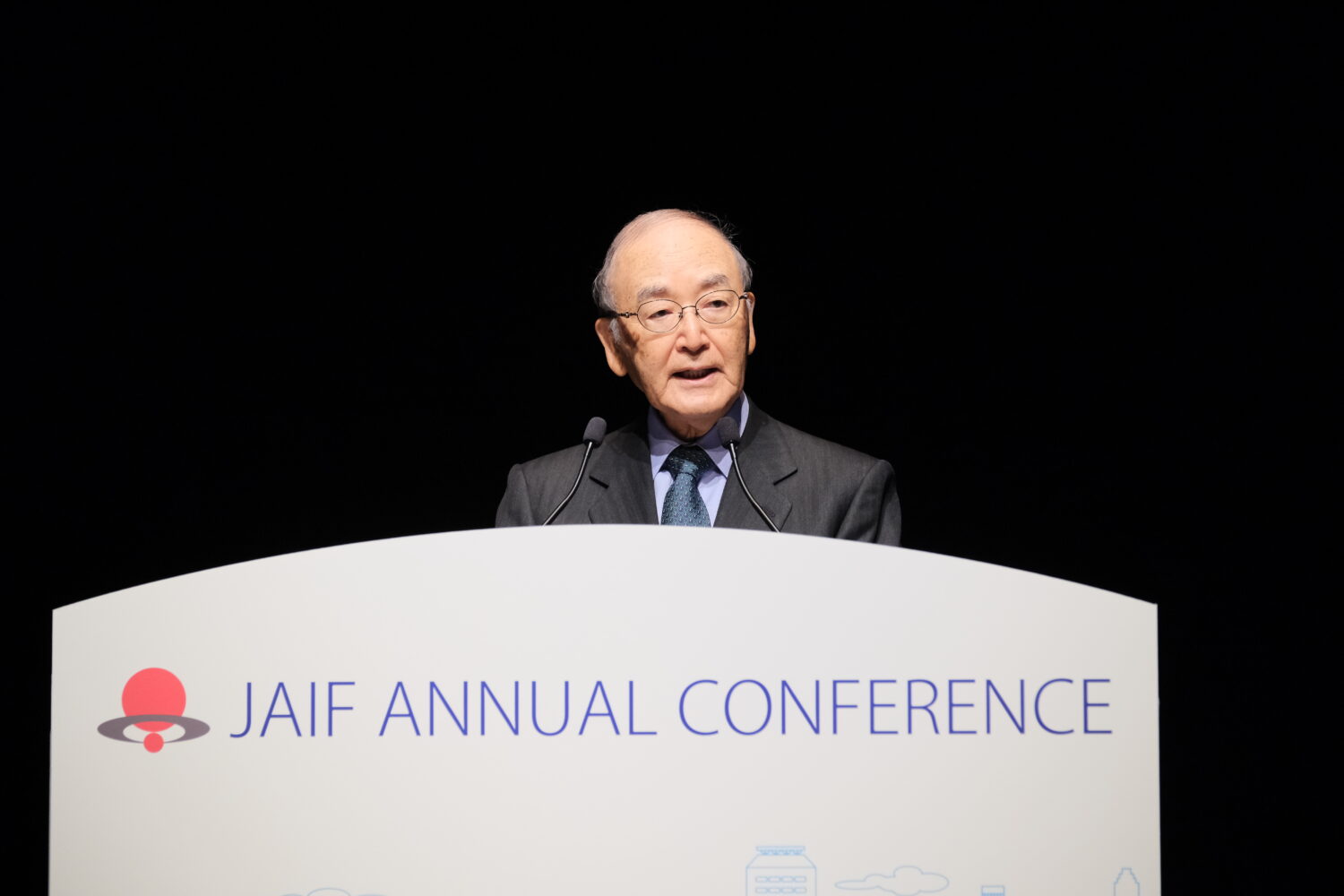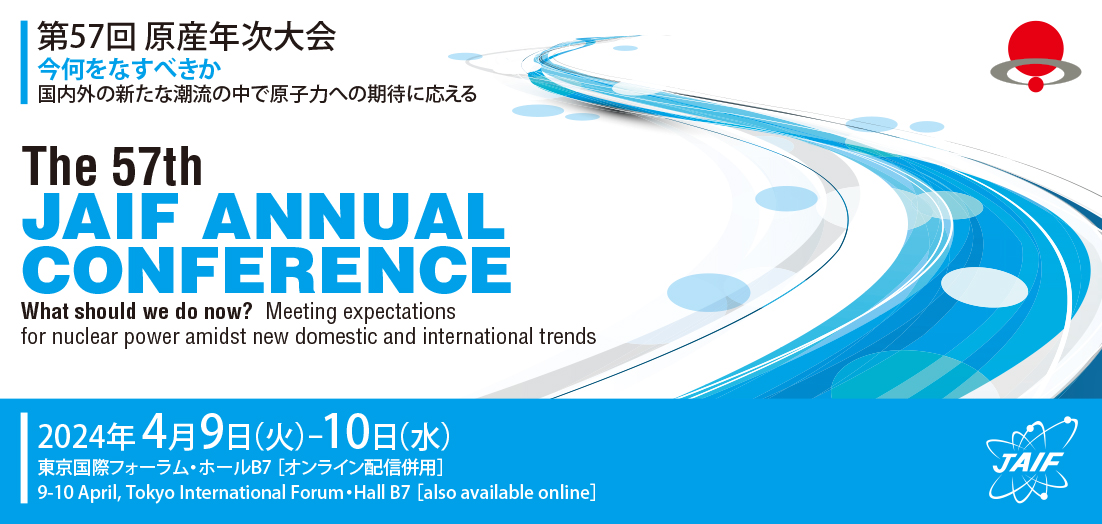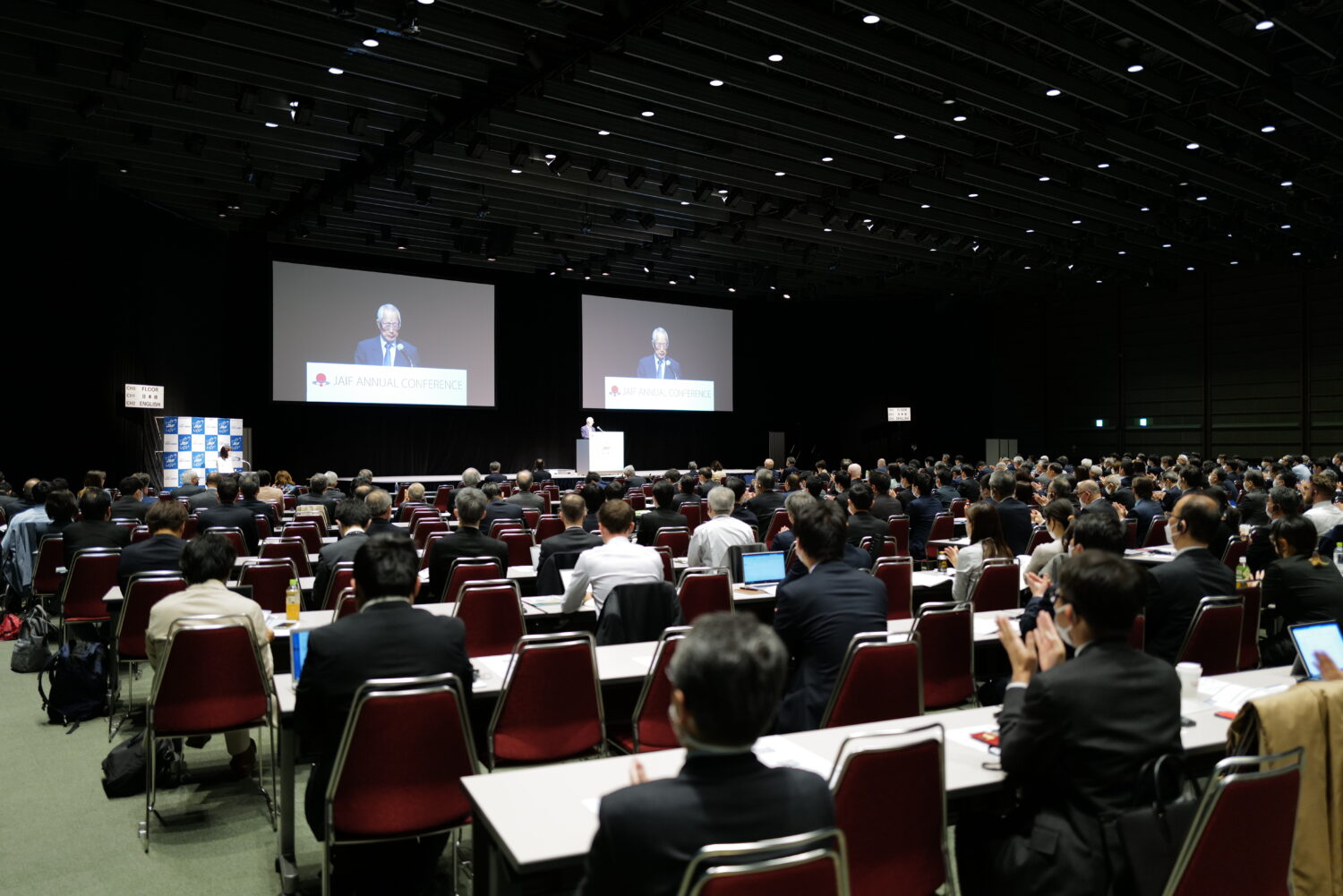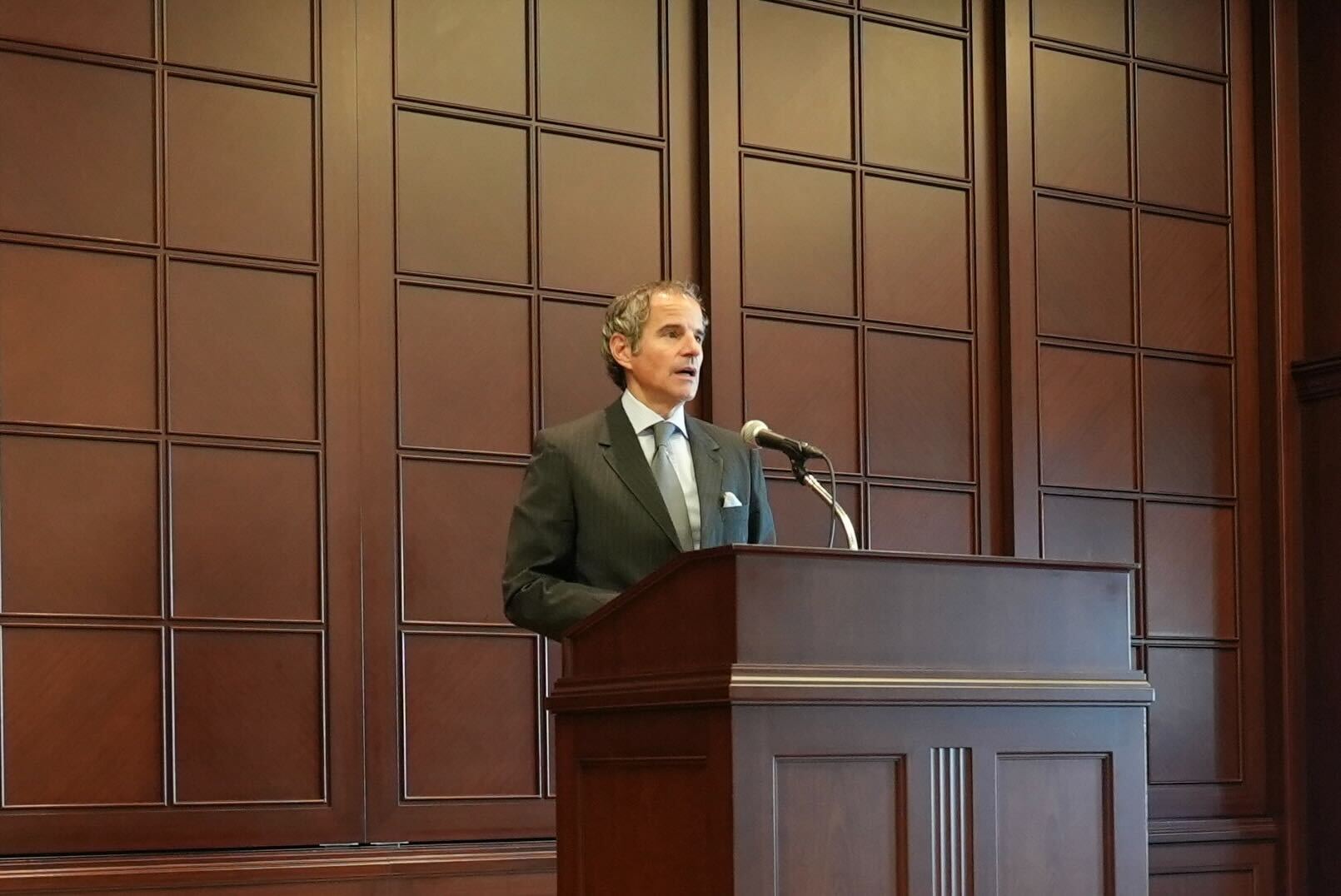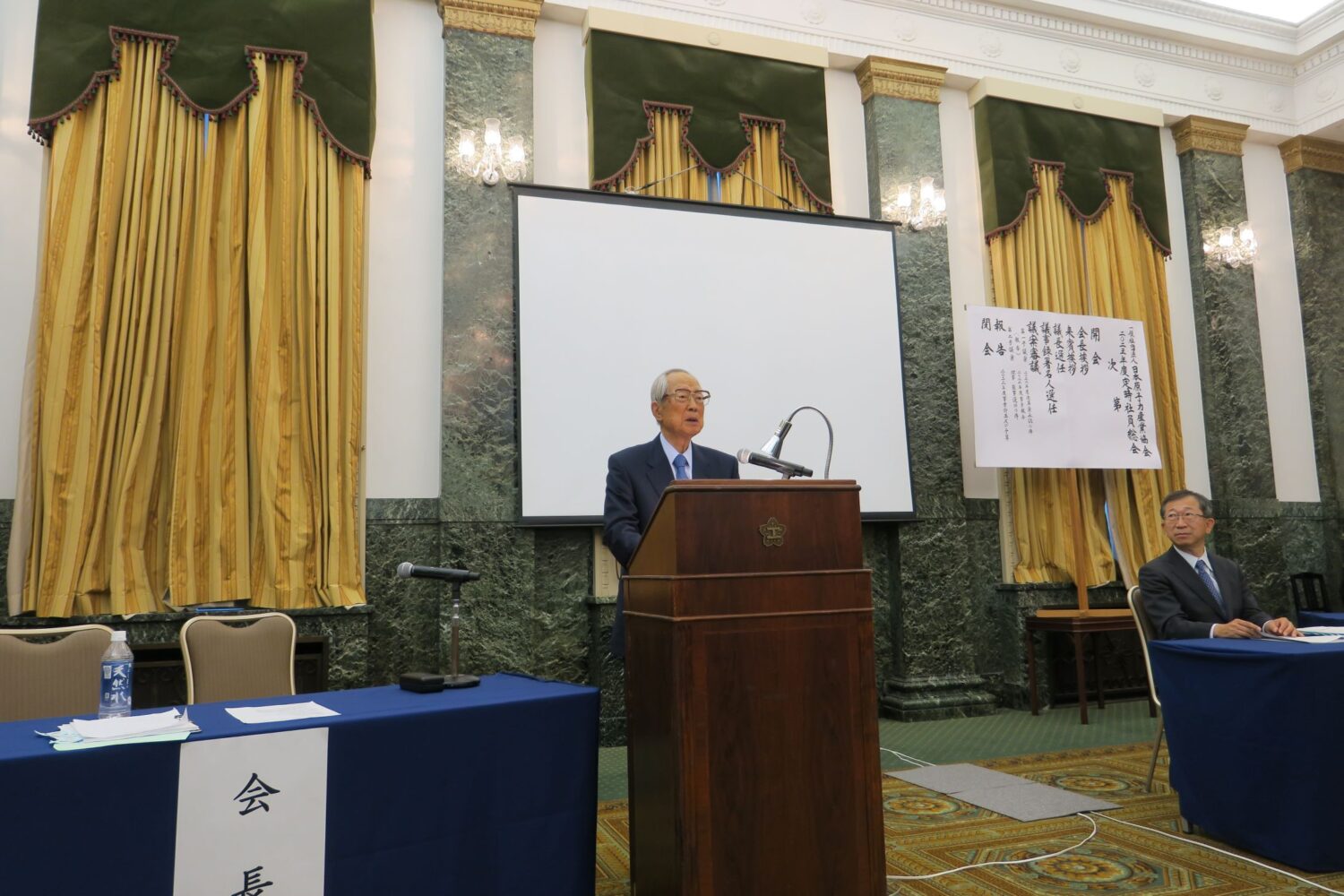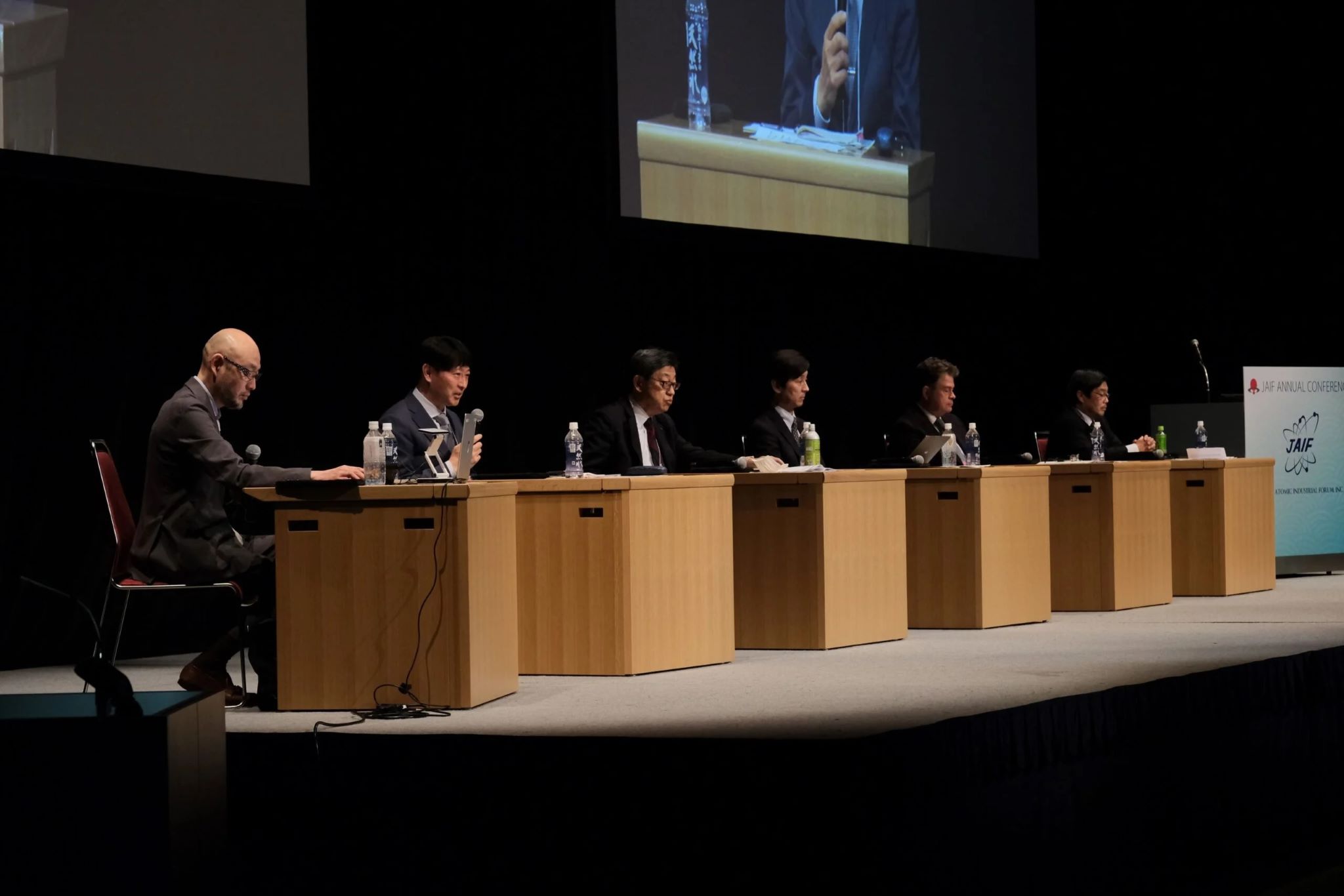On November 12, the Japan Atomic Energy Agency (JAEA) held a meeting in Tokyo to make a public report of its activities during the past year.
JAEA President Toshio Kodama began the meeting by explaining Future Vision JAEA2050+, formulated by the agency at the end of last month. Presentations were then given on the latest results of R&D at the agency, followed by a talk session about its research and involvement in society
In that session, presentations were given by Itaru Yasui, president of the Institute for Promoting Sustainable Societies and chair of the Nuclear Energy Subcommittee under the Advisory Committee for Natural Resources and Energy, as well as by Tomoko Murakami of the Institute of Energy Economics, Japan (IEEJ).
Next to speak was someone from industry: Takashi Matsumoto, managing director of Nissan Arc, Ltd., who is engaged in R&D on lithium-ion (Li-ion) batteries through analysis of neutron beams. He talked about the prospects of the goal of JAEA2050+l to create a new society—known as Society 5.0—and also spoke of the future of material analysis with AI.
The meeting included another talk session on the reconstruction and revitalization of the Fukushima region, devastated by a nuclear accident following the giant earthquake of March 2011. Four experts (see photo) were invited to discuss the topic:
・Yuzo Manpuku of the National Agriculture and Food Research Organization, who is a specialist working at the Iidate Village Reconstruction Policy Division of the Iidate Village Office in Fukushima Prefecture.
・Yasuo Ito, senior managing director of the Fukushima Innovation Coast Framework Promotion Organization (FIPO).
・Dr. Sae Ochi, lecturer at the Department of Laboratory Medicine of the Jikei University School of Medicine in Tokyo.
・Director-General Osamu Sudo of the Fukushima Reconstruction Promotion Group within Japan’s Ministry of Economy, Trade and Industry (METI).
Dr. Ochi has been engaged in medical activities in the affected area in the wake of the accident at the Fukushima Daiichi Nuclear Power Station (NPS). Although more than eight years have passed since then, the restoration of such facilities as hospitals and stores has made little progress, leading her to mention that daily living was still the most difficult aspect for people to deal with.
METI’s Sudo spoke from the perspective of someone engaged in governmental administration. He recognized his belief that Fukushima’s reconstruction would only be considered “achieved” once each citizen was able to live there happily. Based on his visits to some eight thousand businesses in the affected area, he talked about the current state of industrial reconstruction, saying that while some firms had closed down permanently, business activity was gradually picking back up.
FIPO’s Ito responded by saying that the most serious issue for companies in the area was a shortage of labor. He said that he hoped to promote the integration of industries at the Fukushima Robot Test Field currently under development in Minamisoma City, located in Fukushima Prefecture.
Iidate Village’s Manpuku outlined a demonstration project to develop farmland using removed and recycled soil, and talked about the challenge of restarting agriculture, saying, “The aging of the population has proceeded to a critical state, requiring measures to attract younger people to the region.”
METI’s Sudo then noted that two graduates of the Soma Agricultural High School had begun working in the field of “smart agriculture,” now being pursued at a test farm in the Odaka District of Fukushima Prefecture. He also indicated several issues yet unsolved, such as the need to create new primary-sector businesses in the Hamadori region of eastern Fukushima.
Last to speak was Koichi Noda, director general of JAEA’s Fukushima R&D Division. Citing an unmanned surface vessel (marine drone) being used to measure radiation in the ocean, he stressed how it had been developed through collaboration between equipment manufacturers, on the one hand, and a marine leisure company in Fukushima, on the other. He concluded by saying that only such cooperation with local businesses would enable the true reconstruction of the area.


